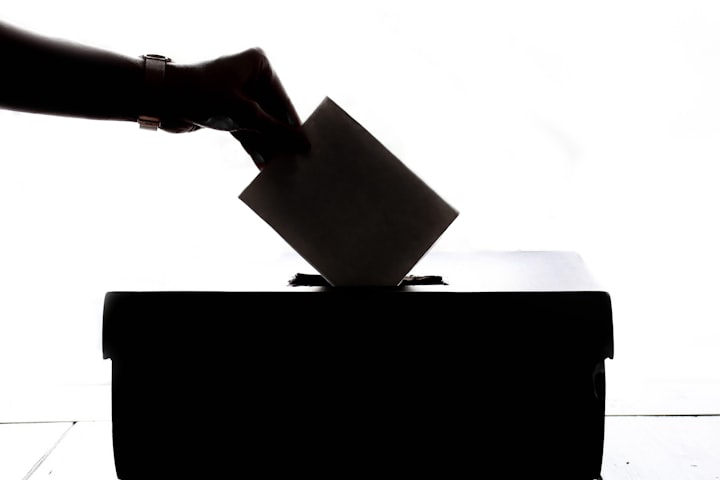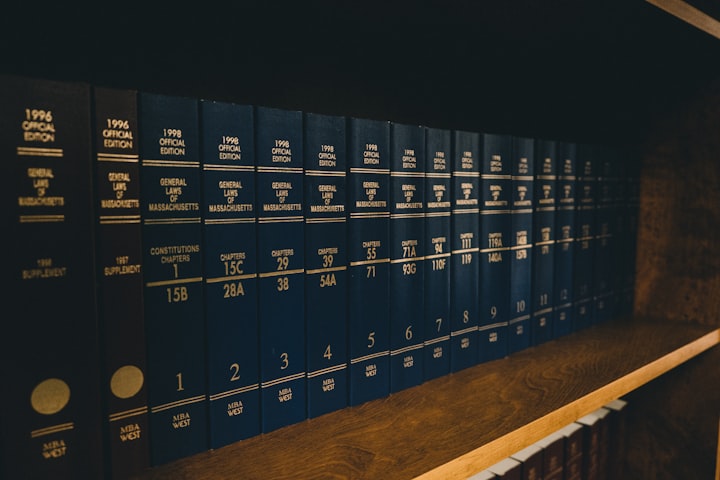
Introduction
The invention of the distributed database, otherwise known as the ‘blockchain’ was a revolution in the technical sphere. Satoshi Nakamoto, the unknown inventor of Bitcoin, realised you could solve the double-spend problem of digital currency by having a distributed database. But these distributed databases have far more potential than just recording transaction histories. What if you could use it to decide election results? Election fraud could become a thing of the past.
A recent online debate I participated in has seen some local elections in the UK possibly delayed due to public health risk from the Coronavirus pandemic. But what if voters could vote without leaving the comfort of their home? How could a blockchain help solve problems that prevent elections being voted for at home?
Tamper-Proof Data
How a blockchain works, in essence, is a shared distributed ledger or database. How this works is computers worldwide hold a copy of this database, and solve complex mathematical problems based on the data to be recorded that take time to solve but are quick to verify. Once a solution is found, the database is updated per a set of consensus rules. There are other methods of updating the database, but this is the method Bitcoin uses.
Updates to the database may only be done as per the software rules, harmonised by all computers on the network. If someone (such as a government, individual or a small collective) tries to tamper with their copy of the database, the rest of the network rejects the change. These can be decentralised, from copies hosted inside private homes to large data centres.
When a Bitcoin is spent, for example, a Public/Private key pair is used. The public key can be given to everyone, to move funds to that address. The Private key acts like a cheque signature to transfer funds from its matching public key/address and must be kept private.
Use of the Blockchain in Elections
The Blockchain can revolutionise the election space, and it can be implemented in a way that enables in-person and online voting in a tamper-proof way.
Barely an election goes by where someone does not cry foul. In extreme cases, accusations of election fraud can result in attempted coups (such as on the US Capitol in January 2021), protests, and violence. Some elections like those held in the UK use erasable pencil on ballot papers.
The Blockchain can solve all of these problems so that no individual country could tamper with the results of their own elections.
Existing blockchains, such as Ethereum, which allow digital contracts, could be used for this purpose. This is important, as the Ethereum Blockchain has computers worldwide, each with identical copies of the database.
No individual country or bad actor could make software changes to change the rules to its liking as the rest of the network would reject it. Even a bloc of nations would have great difficulty in this, and even then, it requires the individual validation nodes agree to update their software. Even then, all previous database entries can be mathematically verified and linked to one another, so cannot be tampered with if done on a blockchain with high security once time has elapsed.
A vote can be cast with a valid digital proof of the voter (Using encryption keys such as public/private keypairs as in Bitcoin). The signed vote is then broadcast to the network. Once validated, it is forever on the Blockchain with no change possible if it is a widespread secure blockchain.
Possible Implementations
A system could be set up where a voter can submit proof of their right to vote. One solution would be securely generated and printed polling cards. A public-private key pair is generated on an air-gapped isolated from the internet machine, a public key tied to a voter. The private keys are not seen by anyone but printed on tamper-proof sealed paper that becomes the voter polling card.
A cover must be scratched off to reveal the private key. When the cards are printed, the private key is promptly wiped from system memory (this software and hardware being subjected to public audits to verify this happens). The polling card could also have a revealable QR code to allow easy use of a government voting app.
A voter receives their polling card and wishes to cast their vote online via a browser, app or in person. The public key is in a database of registered voters. The users’ public key identifies them and is already linked to an individual voter. However, the voters’ name need not be stored on the Blockchain, only a pointer to an electoral register entry that is kept private but accessible to impartial security audits. No voter could get more than one key or vote twice.
At each election, that private electoral register database not on the Blockchain can be recorded to certified WORM (write once, read many) media before voting begins, rendering that impossible to tamper with. The reason voter names are kept off-chain is to prevent identification of which member of the public voted who from other members of the public, as public blockchains can be read by the public. The public can see how many public keys (which are only given to each person once) voted for a particular candidate in real-time.
How would a vote be cast?
A voter’s polling card arrives in the mail. The voter scratches off the seal that hides the private key and/or QR code and scans it with the application or types it into the app/software. If voting in person, the QR code on their polling card could be scanned like some transport tickets are today.
The private key verifies the voter who the public key was assigned to casts the vote. This can be validated in any audits as registered voters for that election has a public key tied to them on any electoral register which is kept private as stated above, but accessible for audits. They can be audited by machine or manually.
The signed/validated vote (validated by the private key on the polling card, which does not have to be sent over the internet) is transmitted to the network. If valid, all those tens of thousands or more computers record the result on the Blockchain, where it cannot be tampered with. The public/private key pair can only be used to cast a vote ONCE, preventing multiple votes from the same public key.
Counting Votes
After the election is over, which can start and end at a specified time/date, the public keys that voted for a particular candidate can instantly be counted by machine. The results are made visible to the public in real-time. No counting votes in rooms that the public cannot see. Every member of the public can view the Blockchain and validate the machine counted results if they wish.
Members of the public can compare the public key on their polling card with the result on-chain as well at any time.
Votes cannot be changed or altered once on-chain unless you could somehow hijack more than half of the computers on a blockchain all over the world within a short time, which on a secure blockchain is impossible. And the more time that passes, the longer you would have to hijack those computers to do so. The decentralised database is immutable.
If there is a dispute about the number of public keys issued and if they are all tied to registered voters, they could be independently audited to electoral register data stored on multiple instances on WORM media at local government offices. Write once media cannot be edited, and thus, it is easy for an independent audit to prove that each and every public key on-chain was only issued once to a real voter.
Advantages of Online Blockchain Voting
There are many advantages to Blockchain Voting systems:
• Ease of access to the disabled. A disabled person who is housebound can cast a vote online.
• Enables easier voting around work schedules. No more needing to get down to a polling station if it inconveniences the voter.
• Faster, easier counting. No counting behind closed doors. Counting can be done by computer, minimising errors. Can be manually counted if desired.
• Easier to audit. Less paper usage. Secure.
• In-Person voting for those who do not understand the technology is still possible; their polling card can be scanned in at a voting booth enabling a vote to be cast. Voting booths can have their software security audited.
• During times of Public Health risk, such as the Coronavirus Pandemic of 2020, voting can be done during a lockdown, minimising the need to leave home.
• Any member of the public can verify the results.
• This is an opinion, but I feel that it would increase voter turnout, as many who would not leave their house would vote, as less effort is involved.
• Election fraud is much harder to achieve, and accusations can easily be disproven.
Disadvantages of Online Blockchain Voting
There are some disadvantages, some of which can be mitigated.
• If an individual’s computer is compromised, the private key could be leaked by a virus. Mitigation against this can be mandating the use of up-to-date anti-virus software before the application can be used on a computer. Only phones running manufacturer-approved operating systems should be allowed to use the application.
• The software must be audited. This is to rule out poor implementations of the public-private key system and ensure security holes are patched. The software should be open source.
• There should be audits of the system used to generate the keypairs, to ensure private keys are not leaked.
• Mail interception of private keys is possible, as it is with polling cards. If a polling card is lost in the mail, there needs to be a way to void public keys and generate a new one for the voter.
• Electoral register data that ties a voter’s public key to their name cannot be put on the Blockchain but can be kept on write-once media at different locations and accessed by independent security auditors if required.
• Any implementation should have the option for in-person voting as described above. This enables access by the elderly or those who do not understand technology.
Conclusion
Blockchain is potentially the next breakthrough in democratic elections. Most disadvantages of a blockchain voting system can be mitigated. It can enable ease of access for disabled people who cannot get to a polling booth, removing the trust required for many proxy votes. Citizens can vote wherever they like. Convenience could increase the amount of participation in elections. In-person voting is still possible for those who wish to do so. There are other implementations possible outside of what I have described above.
Existing blockchains such as Ethereum can be used to record results, as they are already decentralised and secure. No one individual or company owns a blockchain. Any member of the public can participate in validating entries, which further increases the networks’ security.
Voter’s personal data need not be publicly linked to a public key on the Blockchain. Still, they can be independently verified and audited quickly and cheaply in the event of a dispute.
In my view, Blockchain could be the next big thing for elections. It can add more legitimacy to elections. A public ledger shows how many voted for what candidate. Blockchain can make elections more convenient, more accessible and make election fraud a thing of the past.
About the Creator
Jacob
My name is Jacob. I am Autistic, but I love to dig deep into the mysteries of life.
I see life as one long school day; we are here to learn lessons. It is up to us what we make of them.
bitcoincash:qrkclp2czsat0wgxtn9n3sv809lz4hpvnv6kxykgl5






Comments
There are no comments for this story
Be the first to respond and start the conversation.